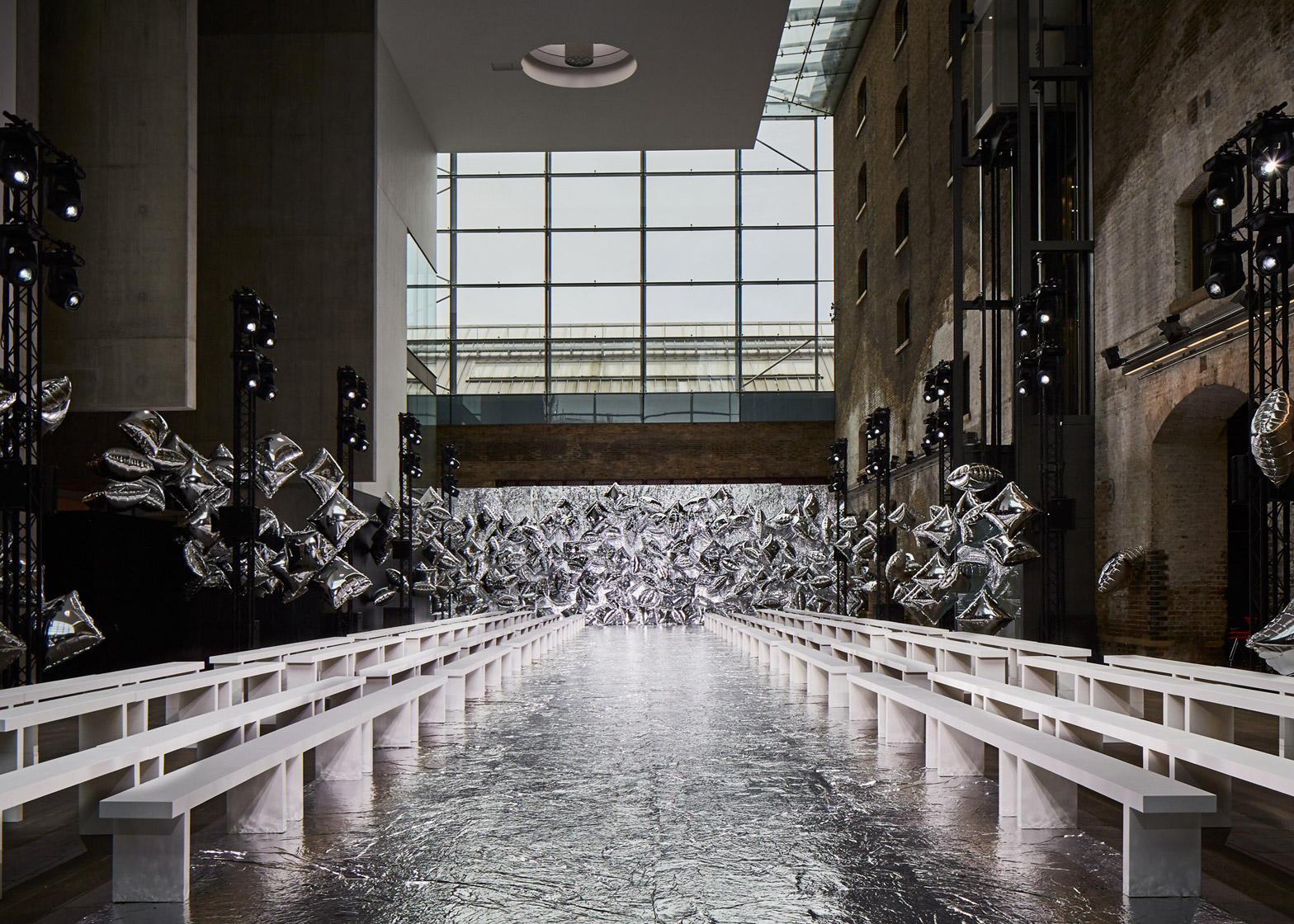Designer Mary Katrantzou's London Fashion Week show took place on a foil-covered catwalk in front of a wall of silvery balloons, created by Paris studio Bureau Betak at Central Saint Martins arts college.
The "prom night" inspired show took place on Sunday in the atrium of CSM's Granary Square building at King's Cross – the campus designed for the college by Stanton Williams.
Bureau Betak used silver foil to cover the runway and a large wall at the back, while matching square balloons were arranged across the backdrop.
"Thanks to its monochromic and reflective silver tones, the set was designed to make Mary Katrantzou's collection pop out," said a Bureau Betak spokesperson.
Led by Alexandre de Betak, the studio specialises in fashion show production and has created sets for brands including Dior, Roberto Cavalli, Hugo Boss and Lacoste.
Bureau Betak also previously created a runway of squishy foam spikes for Katrantzou's Autumn Winter 2015 presentation.
For Autumn Winter 2016, rows of simple white benches ran alongside each side of the catwalk. More balloons were placed behind the audience, continuing the set along the length of the atrium while also disguising lighting rigs.
The reflective materials were intended to highlight the duality of the collection – based on the young love of Romeo and Juliet.
"The set underlines the overriding themes of duality, lovers, and love lost," said Katrantzou's show notes. "A foiled set is filled with silver balloons, a recreation of a prom in Warholian mirror."
The Greek-born, London-based designer is known for her bold use of print and pattern, exemplified by her Autumn Winter 2013 garments decorated with latticed bridge trusses and hazy streetscapes.
Metallics were a prominent trend at this season's London Fashion Week, which took place from 19 to 23 February 2016. Sadie Williams used shiny textiles to put her spin on vintage ski-wear and Sibling worked with silvery lurex threads to create outfits influenced by Grace Jones.
Also for Autumn Winter 2016, Anya Hindmarch's catwalk design featured illuminated pixel-like surfaces based on 8-bit graphics and Rubik's cubes.

